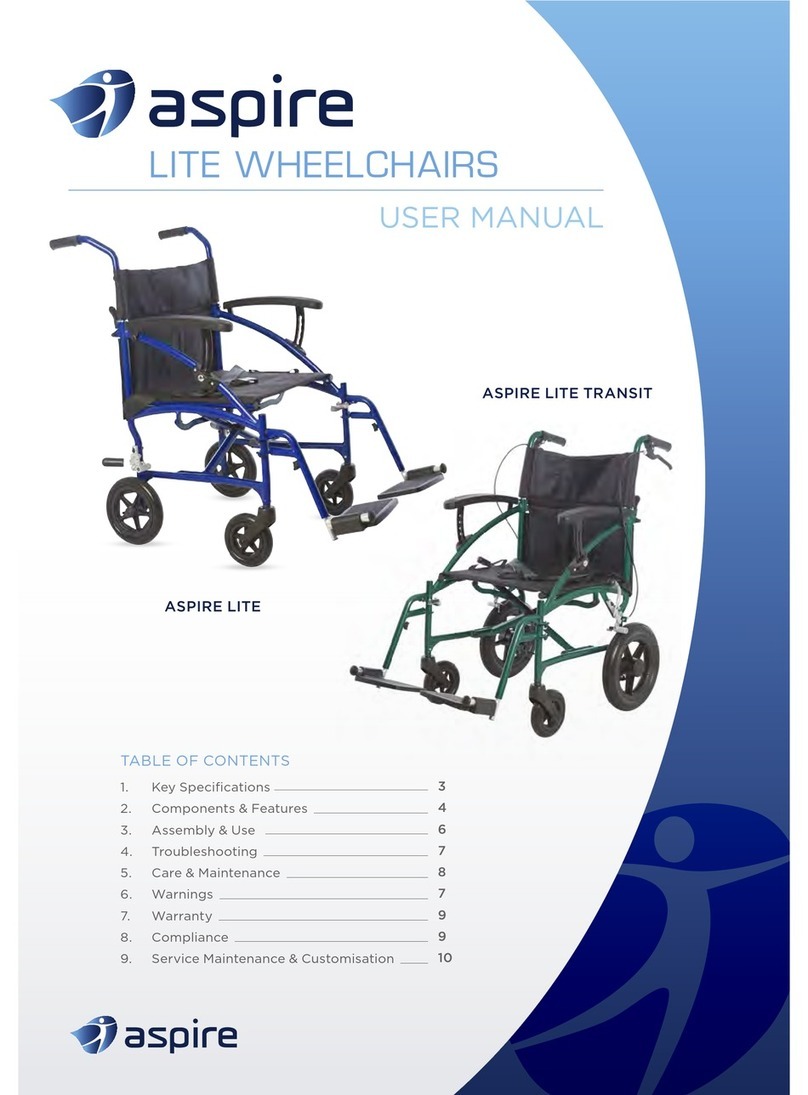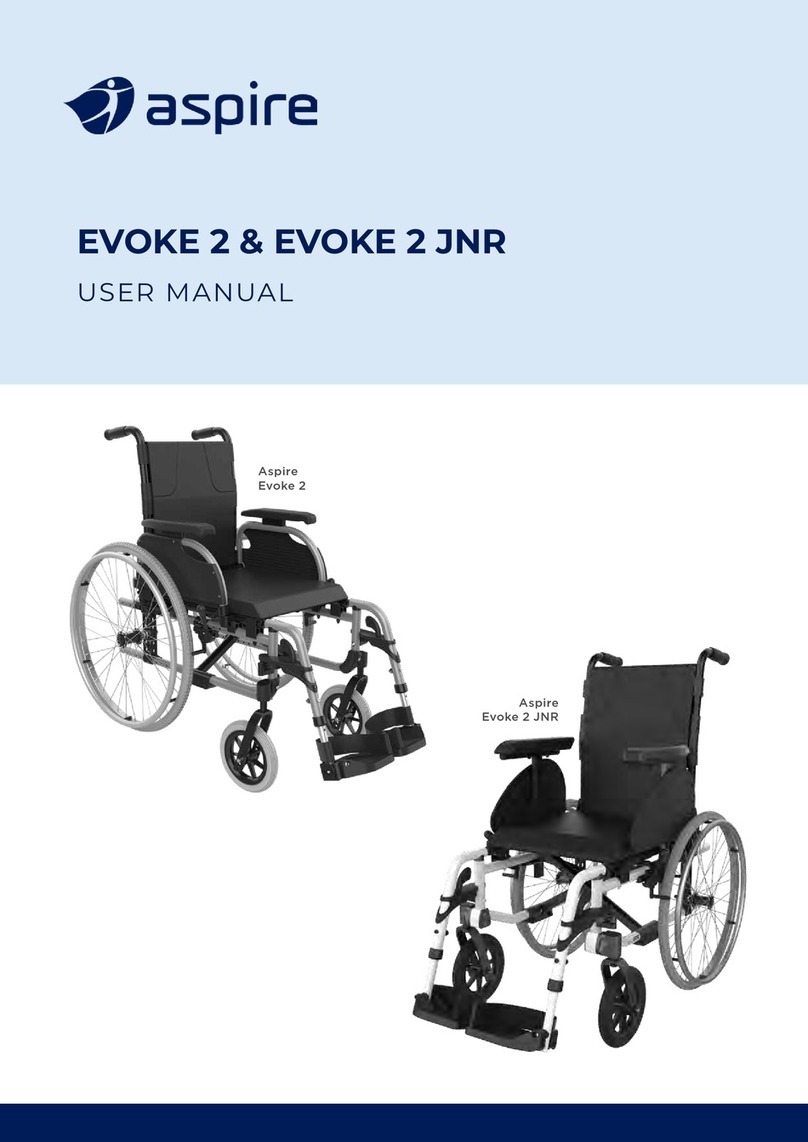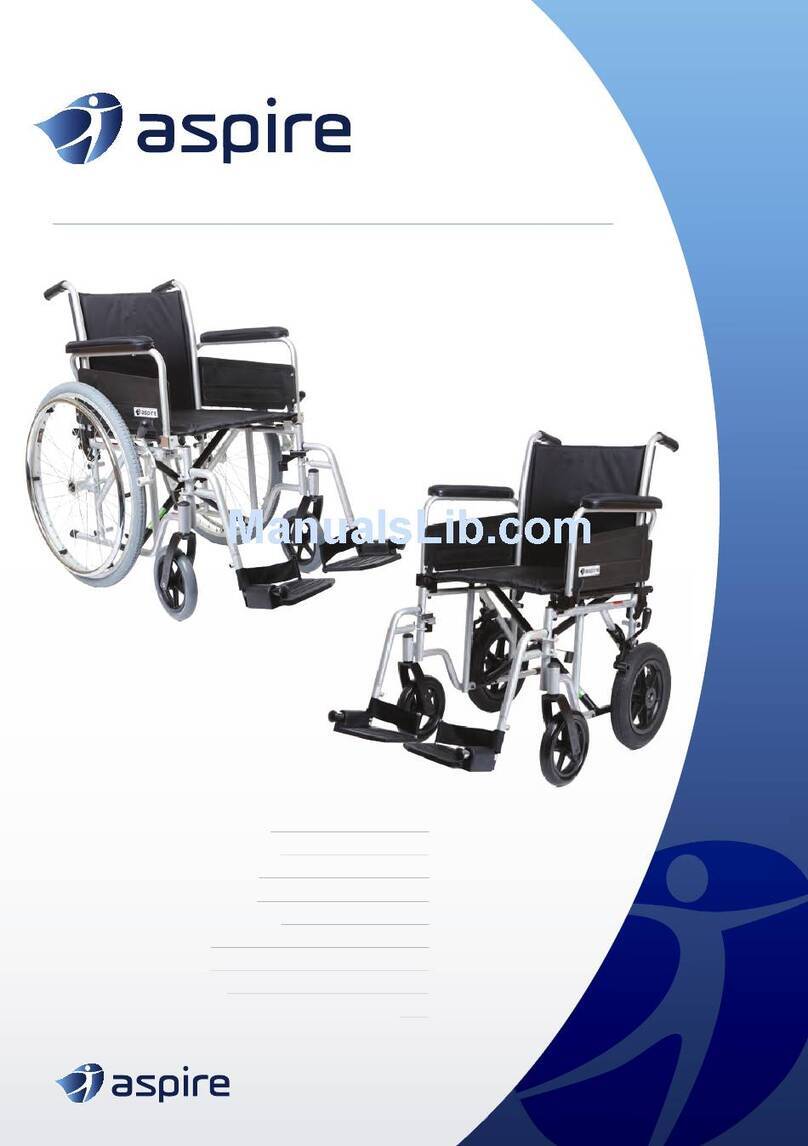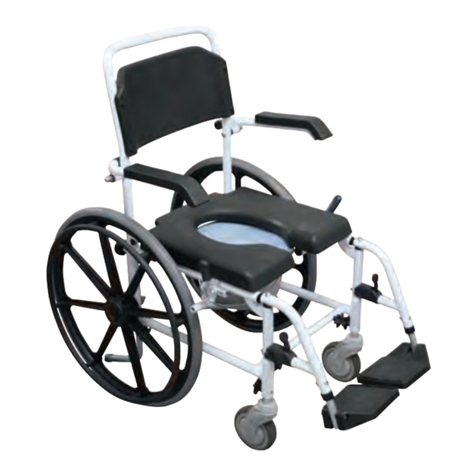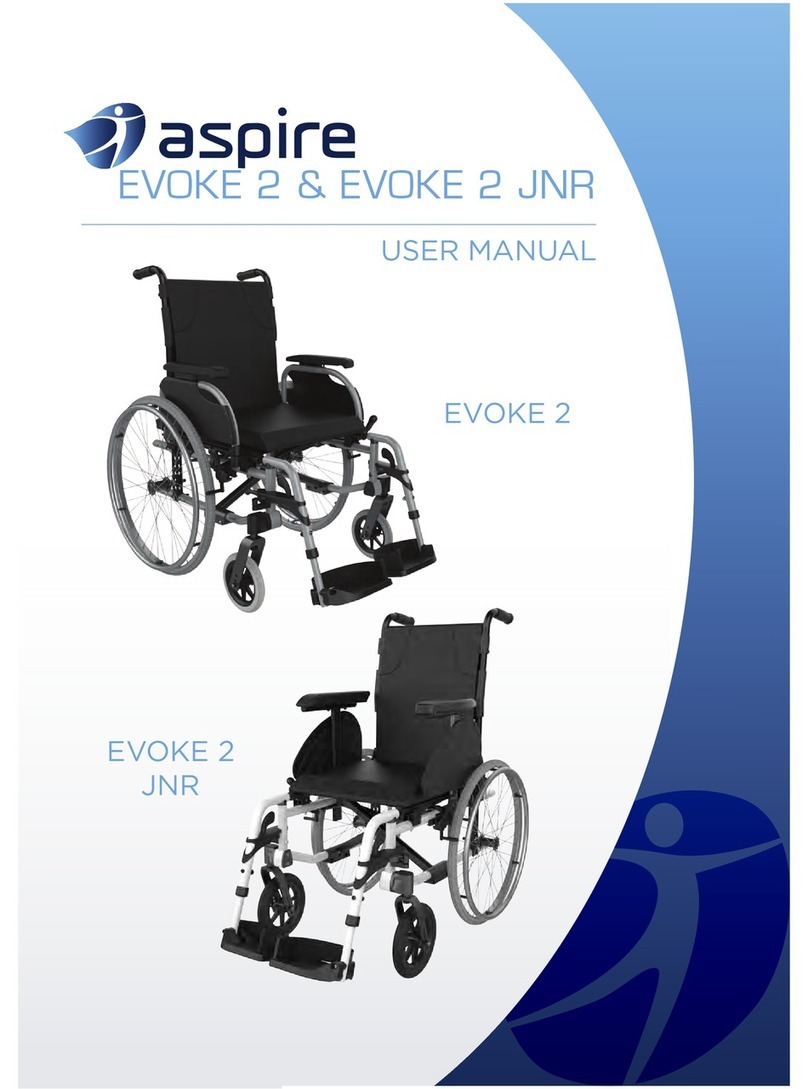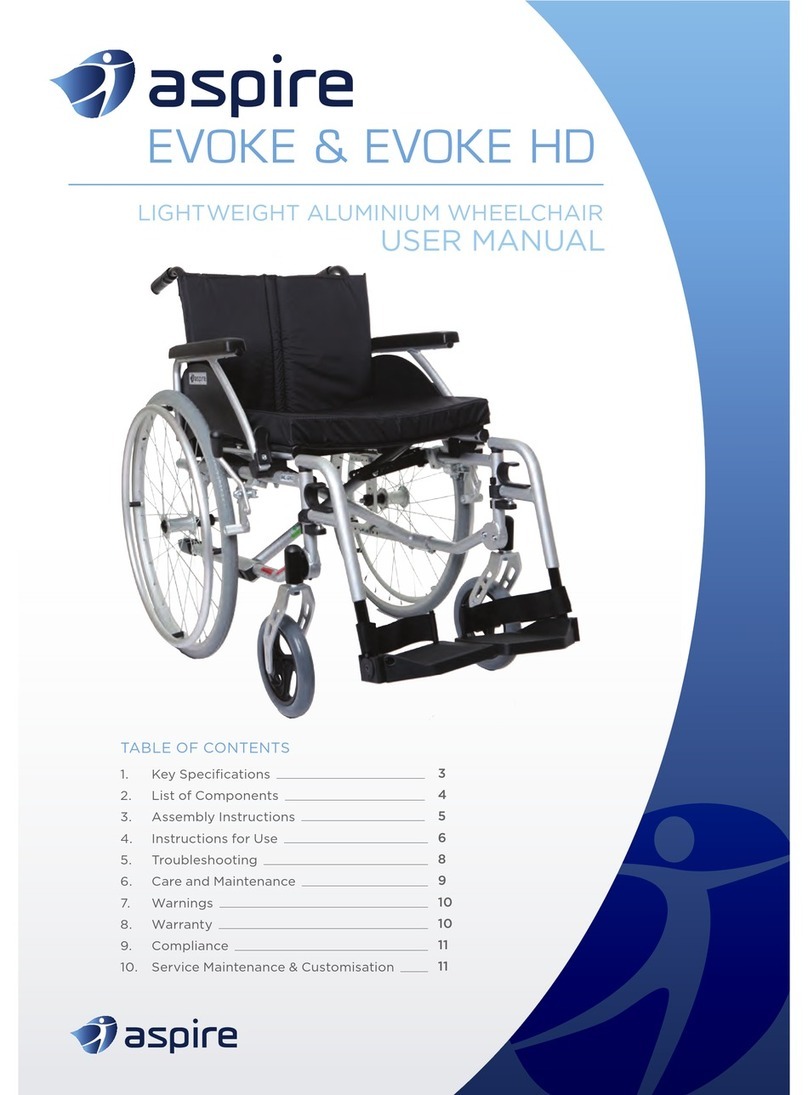9
Wheelchair Driving Instructions
The following are some general techniques for
handling a wheelchair in use.
These instructions are general in nature and
should NEVER be attempted without the
evaluation of their applicability for the user’s
circumstances by a qualified healthcare
professional. Training should be provided by
a qualified healthcare professional before this
product is used.
Climbing over a pavement
Climbing a pavement forward:
Note: this technique is recommended only for
expert wheelchair users.
• Bring the wheelchair close to the
pavement curb
• Balance the wheelchair on the rear wheels
in such a way to raise the castors and go
over the curb. Push the rear wheels while
leaning your body forward.
Climbing forward with an attendant’s help:
• The attendant must tilt the wheelchair
backwards, to slightly raise the castors
over the pavement curb
• Hold the push handles tightly while the rear
wheels climb over the curb
Climbing a pavement backwards:
Note: this technique should be used only if the
pavement is low. It is necessary to take into
consideration also the footrests height.
• Turn the wheelchair with the rear part
facing the pavement curb
• Push the rear wheels while leaning your
body forward
Climbing backwards with an attendant’s help:
• The attendant must pull the wheelchair
back until it touches the pavement curb
• Then tilt the wheelchair backwards, to
raise the castors o the ground
• Finally pull the wheelchair up and pull
it back. Make sure that all four wheels
have climbed over the obstacle, before
“lowering” the wheelchair
Getting off a pavement
Getting off a pavement facing forward:
Note: this technique is recommended only for
expert wheelchair users.
• Bring the wheelchair close to the pavement
curb
• Balance the wheelchair on the rear wheels
in such a way to slightly raise the castors
• Get slowly o the pavement and then
“lower” the castors on the ground
Getting off forward with an attendant’s help:
• The attendant must tilt the wheelchair
backwards, using also the tilt-lever, to raise
the castors o the ground
• Get o the pavement very slowly and then
“lower” the castors on the ground
Getting off a pavement facing backwards:
Note: this technique is NOT recommended
when the curb is higher than 10cm
• Pull back the wheelchair to the pavement
curb
• Pull back slowly and at the same time lean
your body forward
• Pay the utmost attention while carrying out
this operation to avoid the risk of tipping
over
Getting off backwards with an attendant’s help:
• Reverse the wheelchair to the pavement
curb
• Get slowly o the pavement and reverse
slowly until the castors have cleared the
obstacle
• “Lower” all the wheels on the ground
Slopes
Make sure to follow the instructions below,
when going up or down a slope, to avoid the
risk of tipping over.
Do not change direction while driving
up/down a slope. Push the wheelchair
in a straight line when going both uphill
or downhill. If you are in doubt when
approaching a gradient, ask someone to help
you rather than running unnecessary risks.
